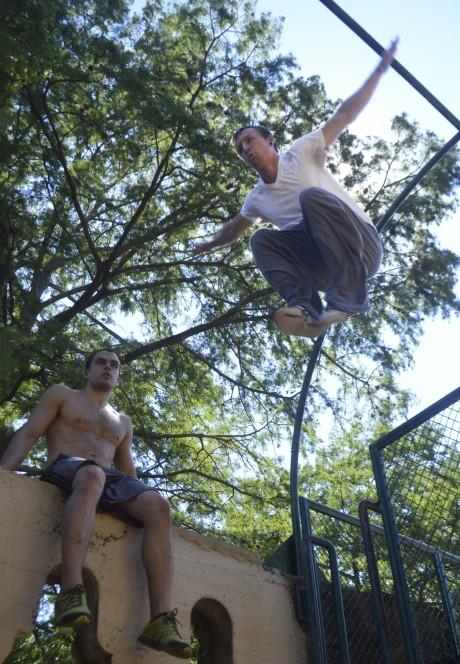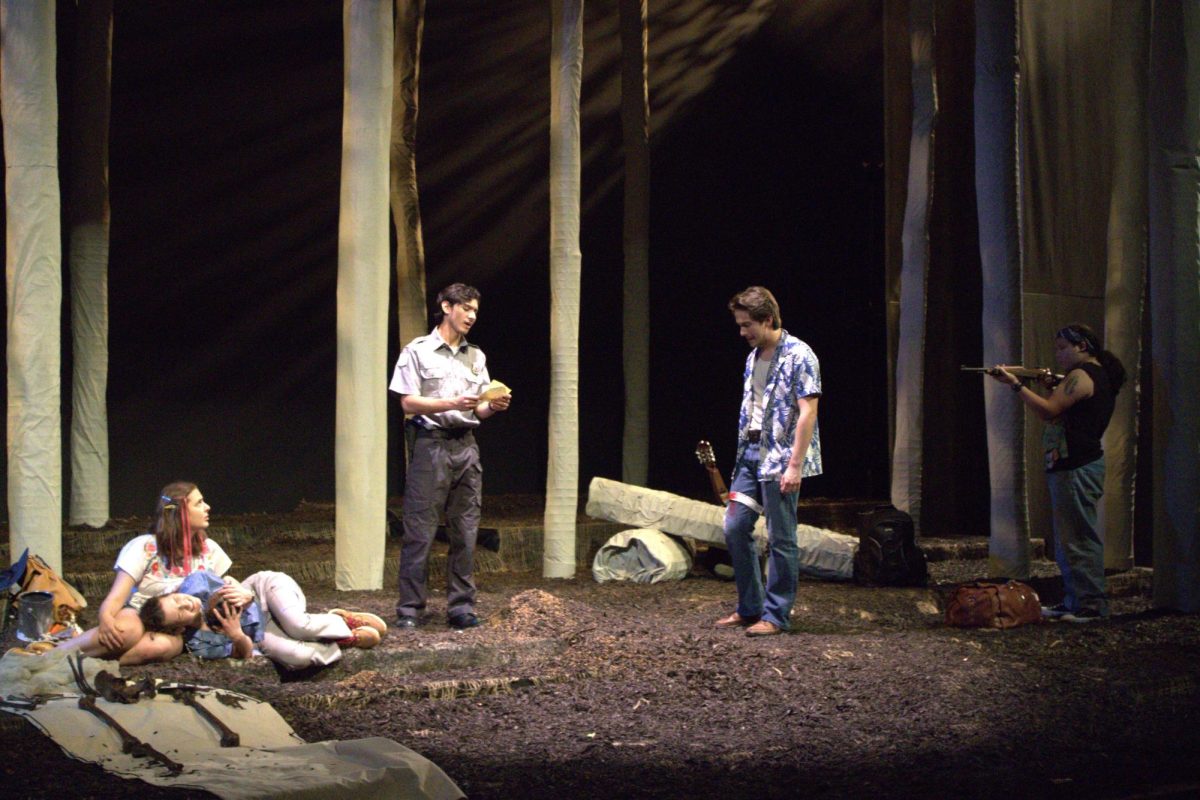
The stone playground in Brackenridge is a place where kids can go to play hide-and-seek, scramble over concrete walls and dangle from metal bars, but every Sunday afternoon, it serves a different function. Amidst a gathering crowd of children and parents, a dozen or so well-muscled individuals begin their warm-up. It starts with a few typical stretches, but soon they take to climbing the trees, leaping from branch to branch, relying solely on their sense of balance and their hands calloused by years of practice. Then they begin their aerial acrobatics, flipping and spinning and rolling on the ground, and it only gets more interesting from there.
For those who didn’t hear about the French discipline as it went viral through YouTube, Parkour is a method of training one’s body to overcome any obstacles in an effort to get from point A to point B as quickly as possible. Basically, it’s urban gymnastics, and it’s just about the coolest thing to watch.
This group that meets weekly in Brackenridge is part of Texas Parkour, an association dedicated to pushing the limits of the human body. Its members are of all ages, sizes, and types. Some are heavily tattooed, with gloriously long beards and wildly colored t-shirts, some are Army recruits from Fort Sam Houston, and some look like they could be high school teachers. The only immediately apparent thing that brings these varied people together is that they all are part of the Parkour sub-culture.
“It teaches you a lot of things that people try to shun you away from,” says Mike Avery, a long time practitioner and the instructor who was leading the group that day, “Nothing is ever concrete, everything’s always changing. You can always do something differently.”
Mike explained to me that the group is dedicated to teaching people the basics of Parkour. Since I’m afraid of heights, I asked how someone could learn to throw themselves from precarious ledge to precarious ledge and risk serious injury. Apparently, it’s all about FEAR.
Forget Everything And Run.
Hector Kichura, a senior member of the group and the only one who refuses to wear shoes, seems to have taken this philosophy to heart. “When I practice [Parkour], I kind of get into a whole other world, my own world, and that’s where I feel completely free.”
Watching them jump incredible distances and scale walls in moments, it certainly seemed like this Parkour group knows something about freedom. Though the danger is very real, I have to say that there is a certain aspect of their carpe diem, devil-may-care attitude that appeals to me. They challenge themselves and their natural instincts to limits that seem almost supernatural, and their confidence in this fact is evident in Mike Avery’s comment, “You can be better than who you were yesterday.”
I asked Mike if he had any advice for Trinity students that wanted to try out Parkour for themselves. He advised that students who were interested should get into contact with someone in the Texas Parkour organization through the following website, http://www.meetup.com/Parkour-San-Antonio/. He also said to relax and remember, “if you feel silly, you’re doing something right.”






